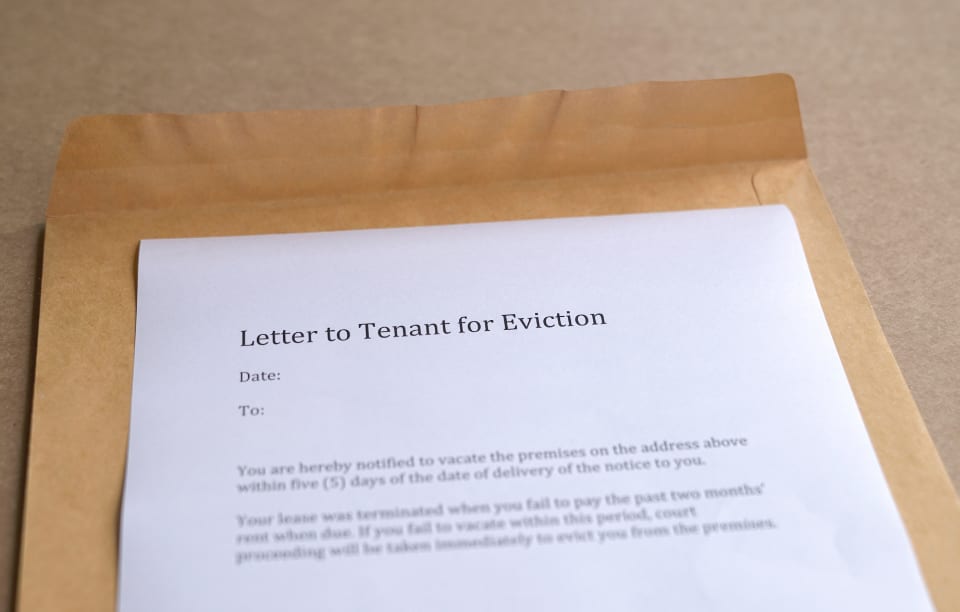How to Evict a Tenant: A Guide for Landlords

No landlord wants to evict a tenant. The stress, the lost income, the sleepless nights…they’re not fun.
While we all wish removing a problem tenant was as easy as snapping our fingers, the truth is it’s a long and complex process. To help make eviction as easy as possible, check on these steps on how to properly evict a tenant.
Know Your State’s Landlord-Tenant Laws
Just as there are important differences between states’ lease laws, there are also variations among each state’s eviction laws. Each state outlines its requirements regarding how much notice you must provide before evicting a tenant, suitable reasons for eviction, and the steps you must take to formally evict someone.
Determine if You May Legally Evict Your Tenant
In order to evict a tenant, you must have a valid reason. These reasons vary from state to state, but you can usually evict a tenant if they do any of the following.
- Fail to pay rent on time
- Violate terms of the lease
- Damage your property outside of normal wear and tear
- Harm others
So before you slap a notice on your tenant’s door, make sure you have a legitimate reason to evict them that doesn’t violate Fair Housing Laws.
Talk with Your Tenants
If you decide you have legal grounds for eviction, the first step is to talk with your tenants. While unideal tenants are a stressor in their own right, filing an eviction lawsuit will only increase your headaches.
By providing your tenants with a chance to leave on their own, you may be able to remove them from the property without taking them to court. When talking with them, explain how the eviction process may harm their credit score and finances. If they see that you’re trying to help them, they will be more likely to leave.
Provide Proper Notice
Once you determine you have a valid reason to pursue eviction, it’s time to let your tenants know. Before bringing the case to court, you must notify your tenants you wish to evict them. This is known as an eviction notice.
Depending on your reasons for seeking eviction as well as your states’ laws, this notice may also let the tenant know they have a certain number of days to remedy the problem.
For example, if a tenant fails to pay rent, you may supply them with a notice to pay or quit. If they pay their rent the following day, you can forgo the rest of the eviction process. Likewise, you may supply a notice to cure or quit if a tenant breaks the lease by keeping a pet. This indicates they a tenant must remove the animal or face eviction.
When you supply an eviction notice, it’s essential that you keep a copy for your records. All states require that you provide adequate notice before filing an eviction lawsuit, and a copy of this notice will serve as proof that you did so.
File with the Local Courts
If your tenants haven’t remedied the situation and refuse to move out, it’s time to file with your local court system. To do this, head to your courthouse and file an unlawful detainer lawsuit.
Gather Evidence and Attend Court
After you file your lawsuit, it’s important to gather the information that provides evidence of your tenant’s misdeeds. This evidence will vary depending on the reason you are seeking eviction. Some information to gather includes your lease agreement, payment records, and both formal and informal messages between you and your tenant.
With the proper evidence in hand, it’s time to head to court on your set date.
Evict the Tenant
If you win your lawsuit, your tenant must vacate the property within a set amount of time. This can be anywhere between two and seven days, depending on the state.
If the tenant doesn’t leave during this time, don’t change the locks or throw their stuff outside. Doing so can get you in serious legal trouble.
Instead, get local law enforcement involved. A local sheriff or marshal will help escort the tenant off of your property if they don’t leave on their own.
















